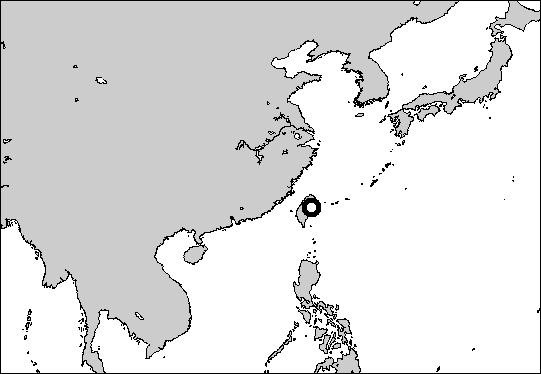
| www.CuriousTaxonomy.net |
|
The Flood in World Myth and Folklore
East Asia |
| © 2021 Mark Isaak |

The god Kakumodan Sappatorroku and the goddess Budaihabu descended to a place called Taurayan with the boy Sura, the girl Nakao, a pig and a chicken. One day, two other gods, Kabitt and Aka, while hunting nearby, saw the pig and chicken and coveted them. They asked Kakumodan for them, but as they had nothing to trade, they were refused. This angered them, and they plotted to kill Kakumodan. They called upon the four sea gods, Mahahan, Mariyaru, Marimokoshi, and Kosomatora, who consented to help. They told Kabitt and Aka that in five days, when the moon was full, the sea will make a booming sound, and they should escape to a mountain where there are stars. On the fifth day, the two gods fled to a mountain, and when they reached the summit, the sea began booming and rising. Kakumodan's house was flooded, but he and his wife escaped by climbing a ladder to the sky. In their haste, though, they forgot the children, and upon reaching safety, they futilely called for them. Sura and Nakao, however, had climbed into a wooden mortar and had floated to safety to the Ragasan mountain. The brother and sister, now alone in the world, feared to offend the ancestral gods, but of necessity they became man and wife. To mitigate the wrath of the gods, they contacted each other as little as possible and interposed a mat between them in their bed. They had three sons and two daughters. During Nakao's first pregnancy, the first grain of millet was found in her ear, and in time the two learned the proper ritual for cultivating that grain.
Frazer, 1919, 226-227.

In an earthquake, mountains tumbled down, the earth gaped, and hot subterranean waters gushed out and flooded the whole earth. Two sisters and a brother escaped in a wooden mortar and floated south to Rarauran. They landed and climbed Mount Kaburugan to view the countryside; then the sisters searched south and the brother searched west for good land. Finding none, they returned and ascended to the mountain's summit again. But the older sister tired half way up, and when the other two returned for her, they found she had turned into a rock. The brother and sister wanted to return to their homeland, but the mortar was rotten and no longer sea-worthy. Wandering away on foot, they saw smoke in the distance and, fearing another eruption and flood, hastened away. But the sister collapsed in exhaustion, and they had to remain. Catastrophe ceased to threaten, and they decided to settle there. They were uncertain whether it would be proper for them to marry, so they asked the sun as it rose the next morning. The sun answered immediately that they may marry. A few months later, the wife conceived, but she delivered only two abortions. They threw these in the river. One went straight down and became the ancestor of fish, and the other swam across and gave rise to crabs. Next morning, the brother asked the moon why their offspring should be fish and crabs. The moon answered that marriage between brother and sister is strictly prohibited, but as they can find no other mates, they must place a mat between them in their marriage bed. They heeded this advice, and the wife soon gave birth to a stone. They were again distraught and were about to throw the stone in the river, but the moon told them they must care for it nevertheless. Later, they settled in a rich land called Arapanai, and in time the brother died. Pitying the woman's loneliness, the moon told her that she would soon have companions. Just five days later, the stone swelled up and four children came from it, some shod and some barefoot. Those with shoes were probably the ancestors of the Chinese.
Frazer, 1919, 227-229.

A brother and sister named Rarakan and Roche survived the flood in a wooden mortar, landing at last on a mountain. They married, but their children were all snakes and frogs. The Sun, taking pity on them, sent deities to teach them how to conduct a religious ceremony, and then they bore healthy children, the ancestors of our tribe.
Ho Ting-jui, A Comparative Study of the Myths and Legends of Formosan Aborigines, Asian Folklore and Social Life Monographs, vol. 18 (Taipei: Orient Culture Service, 1971), 268-269.
